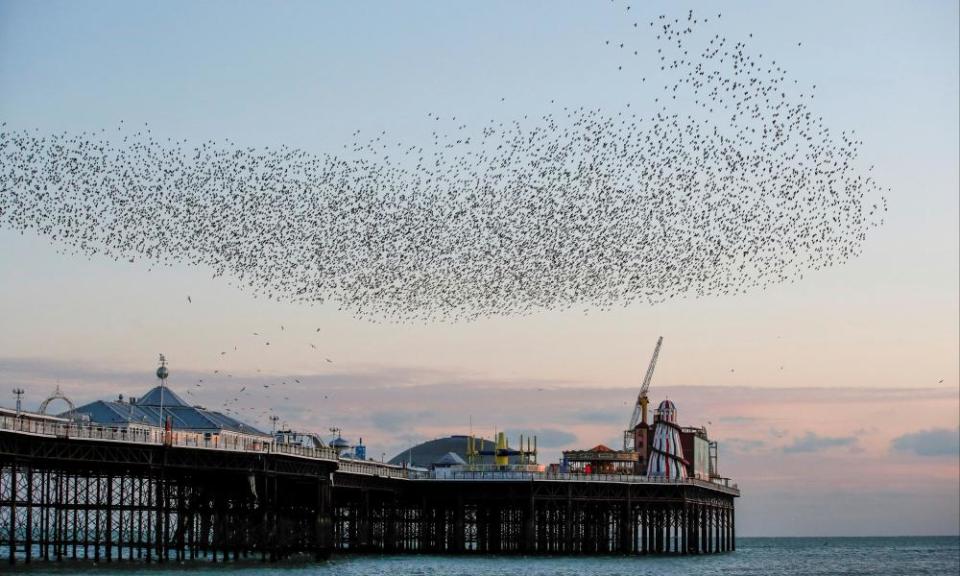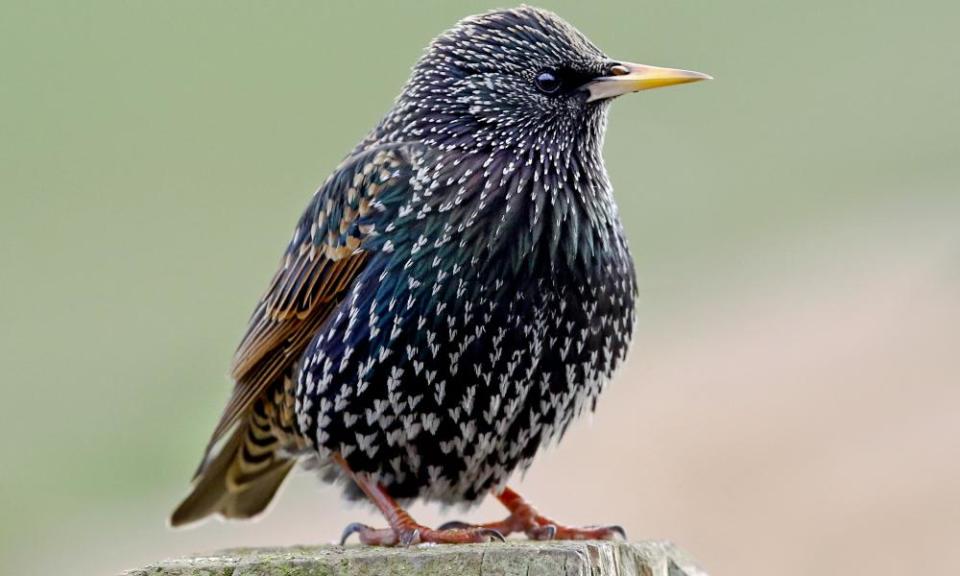Swooping, soaring, murmurating: why the skies are full of starlings

Driving through Ripon, North Yorkshire, last week, Hayley Blaymires was surprised to see thousands of birds swoop in spectacular formations across the sky.
She had heard people talking about starling murmurations, which this year have been happening unusually close to the centre of Ripon, but this was the first time she was seeing them for herself.
Blaymires was so impressed that the next evening she took her two children, aged three and five, to see them too.
“It was mesmerising,” she said. “The kids thought it was fantastic and we wound the windows down so they could hear them cheep as they were coming over. More birds joined and it got bigger as we were watching it, making nice swirling patterns and changing direction. There were lots of ‘wow’s.”
Blaymires and her family are not alone this year in seeing murmurations for the first time. Reported sightings in February were higher than in previous months and above expected levels for the time of year, according to the British Trust for Ornithology (BTO). This is despite travel restrictions making it more difficult to collect the data.
Thousands of pictures and videos have been popping up all over social media as members of the public appear to be coming across the natural phenomenon.
Paul Stancliffe from the BTO said more people could be seeing murmurations than usual because there may simply be more starlings here.
In late autumn, many starlings from colder climates migrate to the UK. The current increased sightings coincide with a cold spell in Russia last month, where temperatures reached a staggering -40C (-40F).
Stancliffe said: “The ones that form these huge murmurations will contain some of our breeding birds but the vast majority will be birds from western Russia and eastern Europe escaping that cold.”

Martin Fowlie from the RSPB said murmurations may have attracted more attention this year because people do not have as many distractions due to lockdown.
He said: “I suspect people are paying more attention than they were before. The time we spend outside is more precious and I think people are noticing these things more than they were before.”
However, Fowlie warned that the undulating masses might give a false impression: “The spectacle is amazing but people shouldn’t be fooled into thinking there are huge numbers of these birds. Starlings are on the red list.”
Numbers have fallen dramatically, down 68% between 1993 and 2018, according to the BTO, and conservationists are encouraging people to put up starling boxes in their gardens.
Stancliffe estimates there are still a few weeks of the year left to see murmurations before large numbers of the birds fly east again.
“The breeding season’s actually started for some species but for starlings it will be a little bit longer yet,” he said. “By the end of this month, many of those murmurations will have broken up.”
Although nobody knows for sure, ornithologists think these breathtaking aerial stunts help starlings keep warm, repel predators and exchange information about good feeding areas.
The biggest and best-known roosts are at Brighton Pier, Gretna Green, on the border between England and Scotland, and Ham Wall nature reserve in Somerset but starlings can be found almost everywhere in the UK, bar the highest parts of the Scottish Highlands.
Stancliffe said: “Maybe an hour before dusk, have a wander around your neighbourhood. They’re really obvious if they’re there, and you don’t need many starlings to form an impressive spectacle.
It may be something in your town or village you’ve never noticed before.”

 Yahoo Finance
Yahoo Finance 